SB Television
Minerva Reef: An Underwater Oasis in the South Pacific
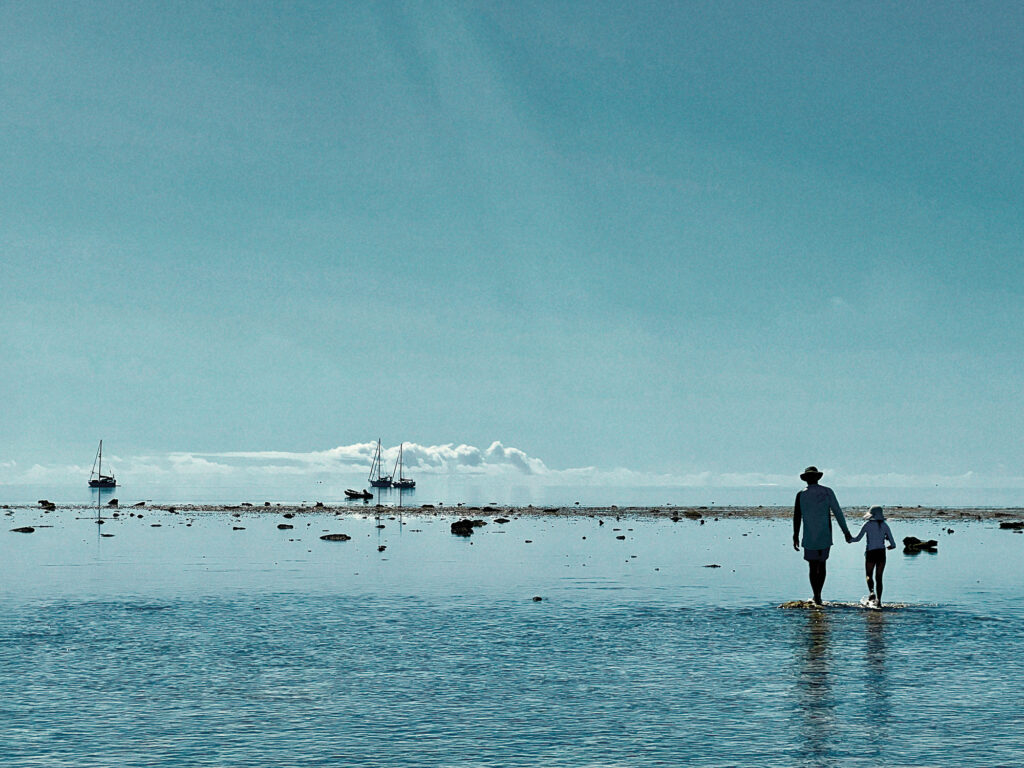 Father and daughter take a stroll at low tide on the reef, with transient yachts visible at anchor in the calm of the inner lagoon beyond.
Kia Koropp
Father and daughter take a stroll at low tide on the reef, with transient yachts visible at anchor in the calm of the inner lagoon beyond.
Kia Koropp
The excitement was mounting as our plane closed in on our mid-Pacific holiday. We had little on the agenda but to dip our toes in crystal-clear water and watch a dusky sun set on an aquatic horizon, rum punch in hand.
There was just one problem: Our destination was submerged under a foot of water. There would be no shimmering black tarmac to provide a safe landing for our pilot. There was only one way in and one way out, and that was by sea.
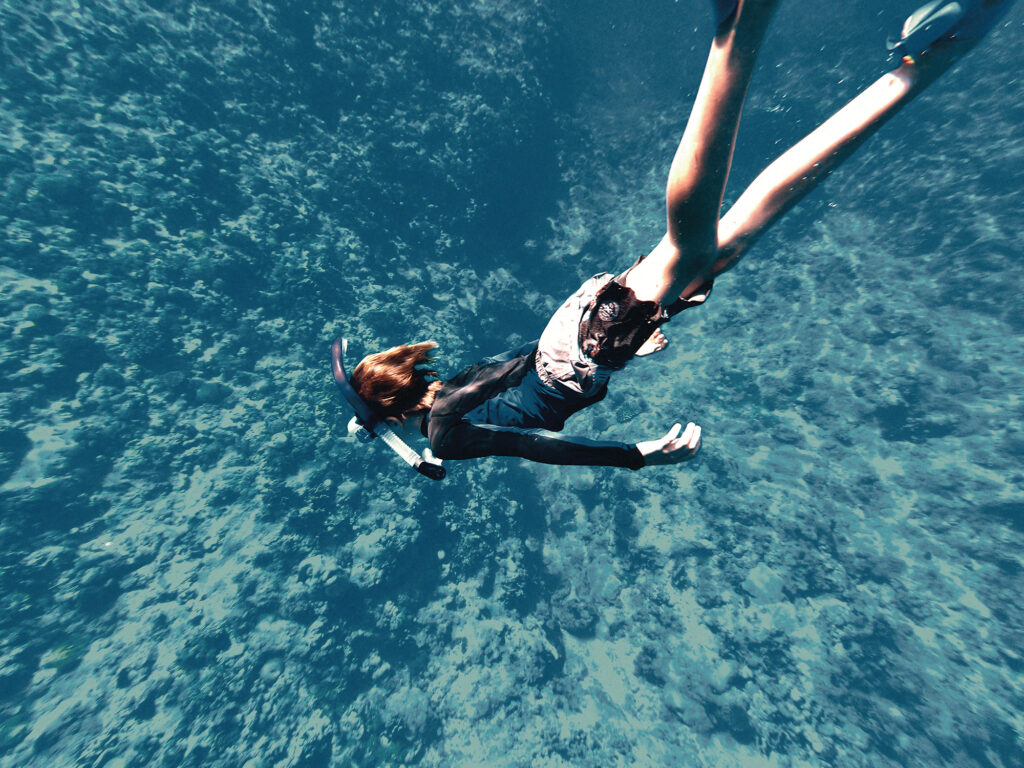 The author’s son, Braca, dives down to get a closer sight of the reef. The vibrant lips of a giant clam (above) all but give up its cunning disguise. Braca is in full explorer mode (opposite), inspecting the nooks and crannies of a pool at low tide.
The author’s son, Braca, dives down to get a closer sight of the reef. The vibrant lips of a giant clam (above) all but give up its cunning disguise. Braca is in full explorer mode (opposite), inspecting the nooks and crannies of a pool at low tide.
Few patches of submerged land hold the reputation of Minerva Reef. For South Pacific cruisers, it is the perfect break in a 1,200-mile passage between New Zealand and Tonga. The novelty of setting anchor in the middle of the ocean and watching the seas roll by as your boat remains in a fixed position was something I wanted to experience. There wouldn’t be anything to do but rest and relax. A day or two would be all we would need before continuing the voyage onward—or so I believed.
Minerva Reef is the modern-day Atlantis, if you stretch the facts a little. In 1972, American millionaire Michael Oliver decided that Minerva was the perfect location to establish his own sovereign nation. There was, however, a small kink in his plan. Laws relating to disputed territories state that land cannot be claimed unless it is a foot above sea level at high tide; this was not the case for North or South Minerva. To claim it, he would have to build it.
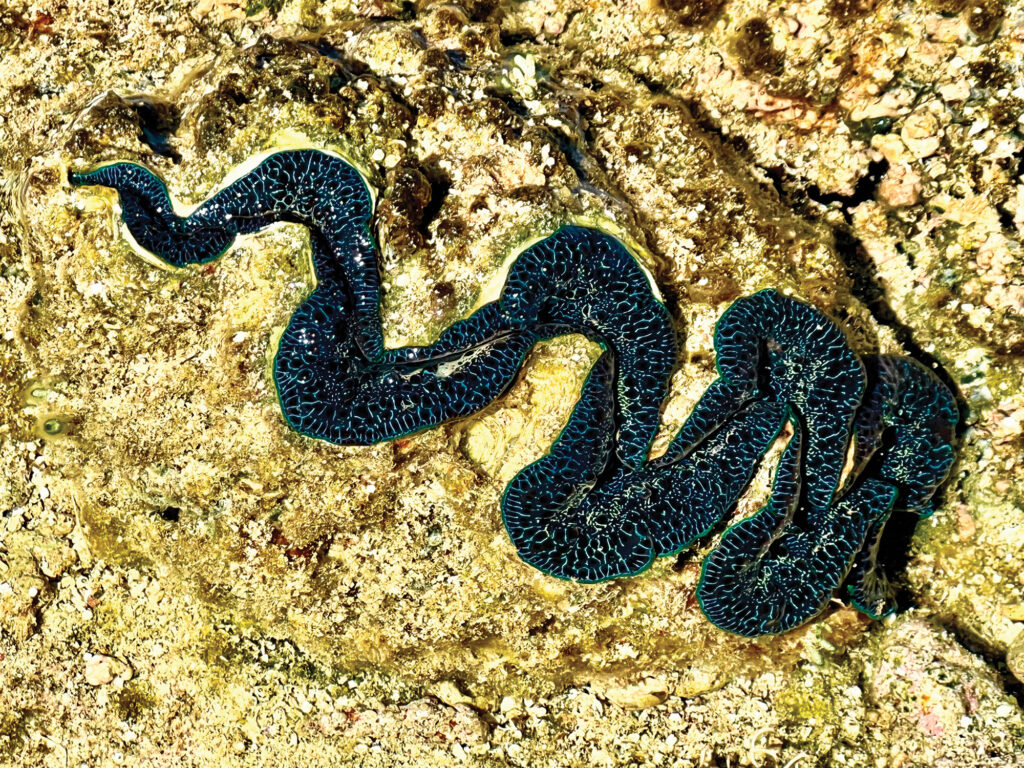 The vibrant lips of a giant clam all but give up its cunning disguise.
Kia Koropp
The vibrant lips of a giant clam all but give up its cunning disguise.
Kia Koropp
The plan Oliver devised was bold. He would take the 6-mile-wide atoll, dredge its neighbor, and fill the inner lagoon until a flat pan of land arose from the sea. A flag was erected, a president elected, and money for the Republic of Minerva coined. King Taufa’ahau Tupou IV, Tonga’s monarch at the time, had no interest in forfeiting access to a territory that had been established fishing grounds for generations. The problem was, Tonga had never laid a claim to it and therefore had no legal rights. Until this point, Minerva was not on the main trade routes and the prevailing winds were unpredictable. The only traffic that the atolls received were the unfortunate ships that got blown off course by storms.
In fact, it is only because of GPS that mariners have recently made Minerva a destination of choice rather than one of disaster. Scattered metal bones of deceased ships are reminders of the hazards of these submerged atolls. Prior to Oliver laying a claim, no one had interest in doing so. Within five months of Oliver’s creation, the king dispatched 90 prisoners to tear down all man-made structures and disperse the 42 inhabitants. The Republic was no more.
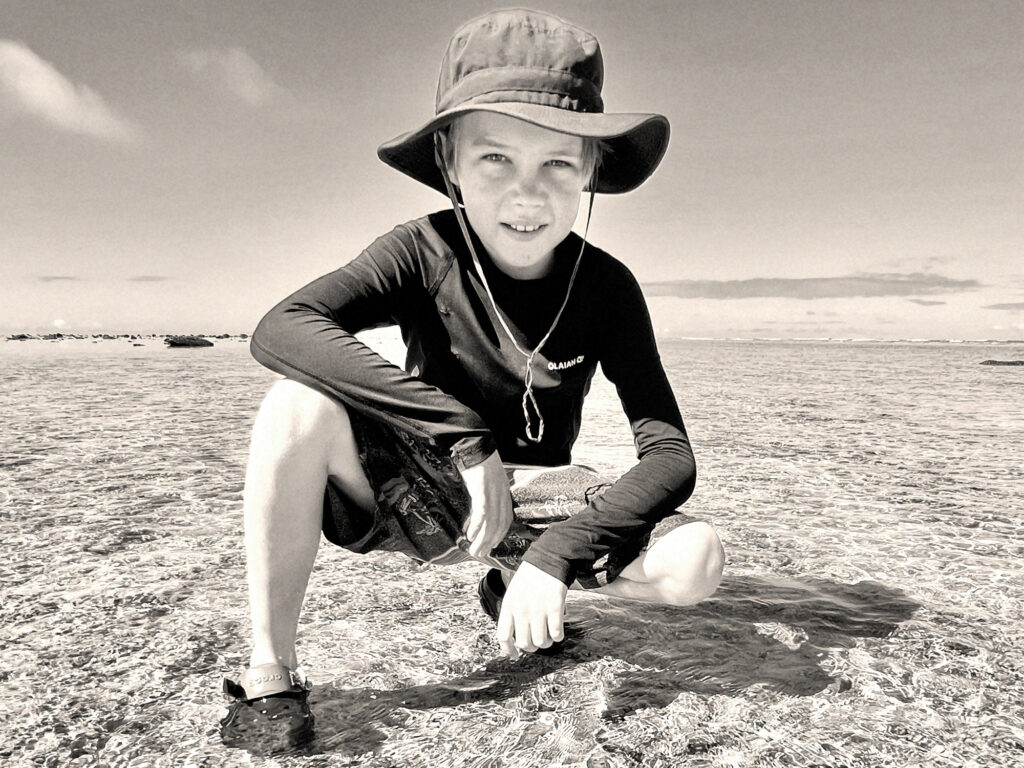 Braca is in full explorer mode, inspecting the nooks and crannies of a pool at low tide.
Kia Koropp
Braca is in full explorer mode, inspecting the nooks and crannies of a pool at low tide.
Kia Koropp
All efforts to raise the atoll from the sea resulted only in its ultimate return to the sea. Today, one peek below the surface makes evident that the fabled lost city exists. Thick walls of hard coral protect a soft limestone core, and the graceful, swaying arms of soft coral reach up toward the light. Swirling and dancing around these graceful, Technicolor tentacles is the seemingly endless gridlock of marine life.
When the opportunity came for us to sail to Minerva, we shared the reef with six other cruisers, all of us filling our days with aquatic activity and our nights with shared stories and laughter. Our options were plentiful. Should we stay in our current spot close to the pass so that we could dive at dawn and avoid a longer dinghy ride to the outer reef? Should we move across the lagoon to the navigation light erected by the Tongan navy to claim Minerva as their own, demolished by the Fijian navy, repaired by the Tongan navy, destroyed again by the Fiji navy, and replaced again by Tonga? Should we move to the northeast corner of the lagoon where the rusted wrecks of past ships provide a sanctuary for lobsters?
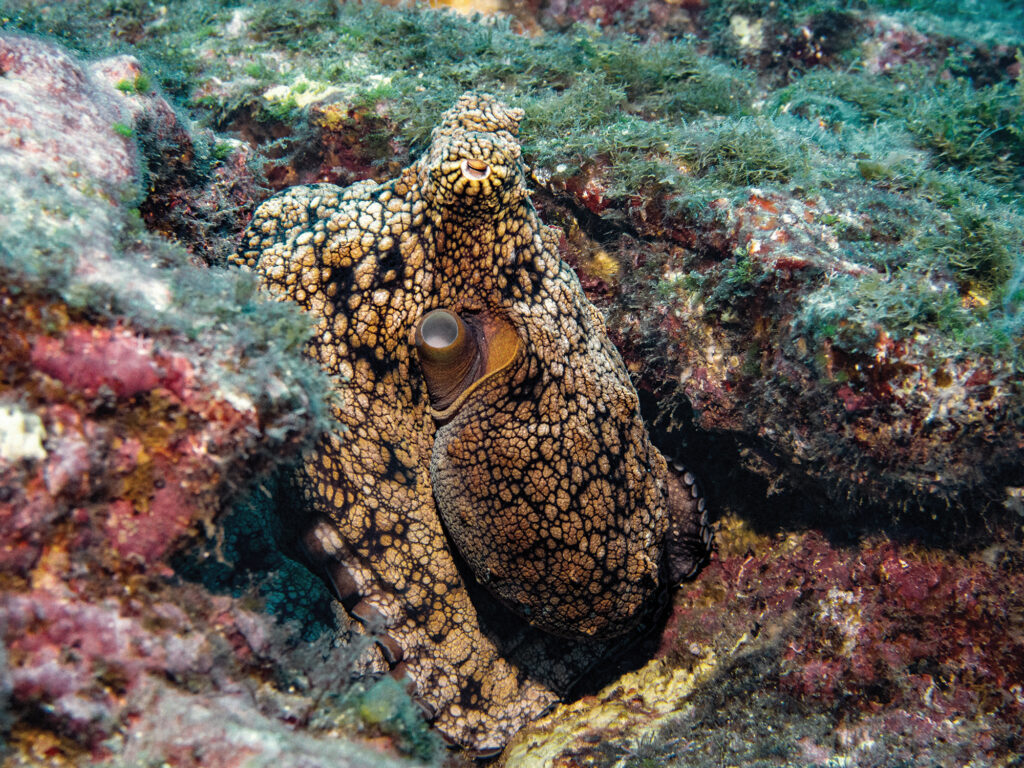 A resident octopus does its best to blend into the reef scenery.
Jasmin Rogge
A resident octopus does its best to blend into the reef scenery.
Jasmin Rogge
The entire lagoon is a relatively flat plateau of fine white sand at a depth of 30 to 65 feet, which provides good holding for yachts. We moved because of wind or desire, to suit the activities of the day. I hadn’t expected to be so exhilarated by all the splendor beneath. All I wanted of my time in Minerva was to slip below the surface and watch the throng of finned and gilled tenants race by me. This aquatic metropolis was more densely populated than Tokyo or Mumbai. Pacing the walls with us was a healthy population of sharks: gray, lemon, whitetip and even tiger. Turtles rose to the surface for air as we descended down the reef, a small shoal of squid performed synchronized movements an arm’s length away, and octopuses cautiously receded into their holes.
When we needed a rest from diving the outer reef, we’d pop off the tanks and snorkel around the inner lagoon. The wrecks provide hidey-holes for resting reef sharks, crammed nose-to-tail in their own mini sanctuary. When the tide pulled out, we could walk on the top of the reef—a two-hour window to put foot on land. We would send relaxed schools of brightly colored parrotfish lying side up in small pockets of inch-deep pools into a flurry of panic. The gaping mouths of giant clams would snap their hinged shells shut, sucking in their vibrant blue, green, purple and orange lips. In the distance, the small black tip of a fin would zip erratically through the surface of the water as a juvenile shark hunted in the tidal traps. Occasionally, we would see the tip of an olive-green flipper or the flip of a charcoal fin as a turtle or ray bolted from the lagoon to deep water.
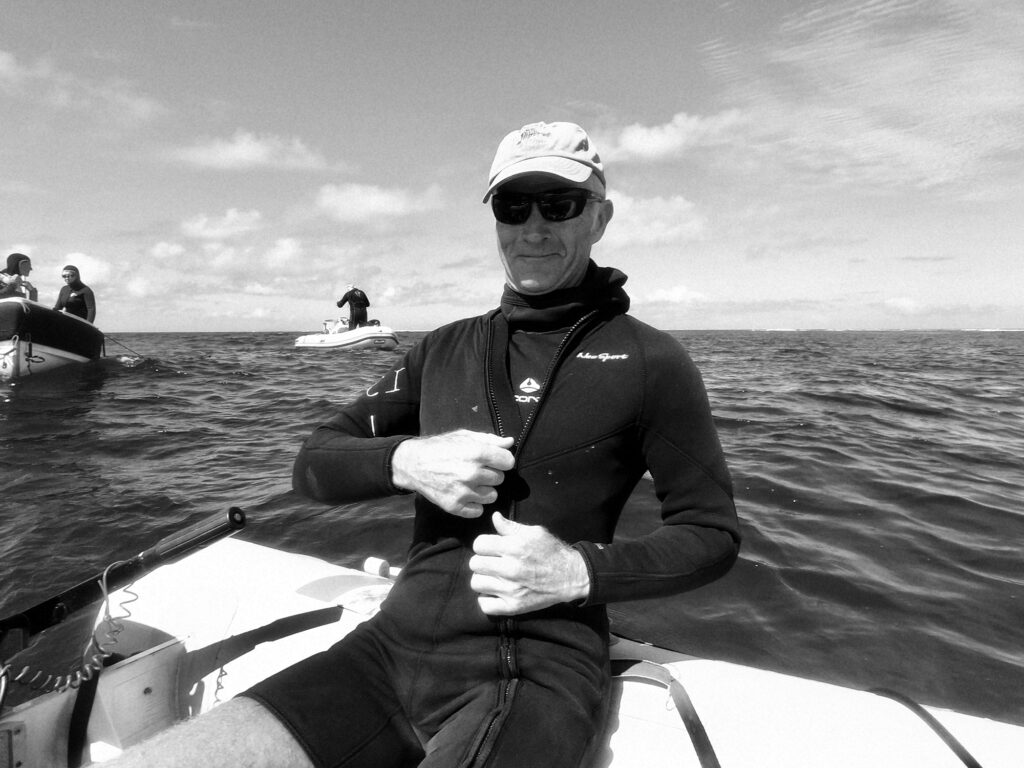 The author’s husband, John, prepares to dive the outer reef with fellow cruisers.
Kia Koropp
The author’s husband, John, prepares to dive the outer reef with fellow cruisers.
Kia Koropp
The atoll is completely uninhabited, so entry to Minerva is as simple as showing up. There are no immigration or customs officials, so there is no one to issue a visa or dictate the number of days you can stay. You choose or the weather will choose for you. As the reef is submerged or exposed, depending on the tide, your comfort ebbs and flows. In calm weather, high tide becomes a gentle swaying roll. Sit inside Minerva, and you’re as likely to feel the lapping of water against your hull as if you were drifting at anchor in a calm, protected bay. But when the wind picks up, the lagoon turns to a washing machine. Every gust churns the surface into froth and confusion. Yachts that anchor deeper in the lagoon for safety’s sake might find their boats bobbing, with the crew unable to eat, sleep or read.
Still, Minerva’s allure is unforgettable. It’s a reminder of the natural beauty that thrives when human influence takes a step back and the ocean is allowed to reign. Minerva Reef is a living testament to the extraordinary diversity of life beneath the waves—a world of color, motion, and wonder that left me humbled and exhilarated.
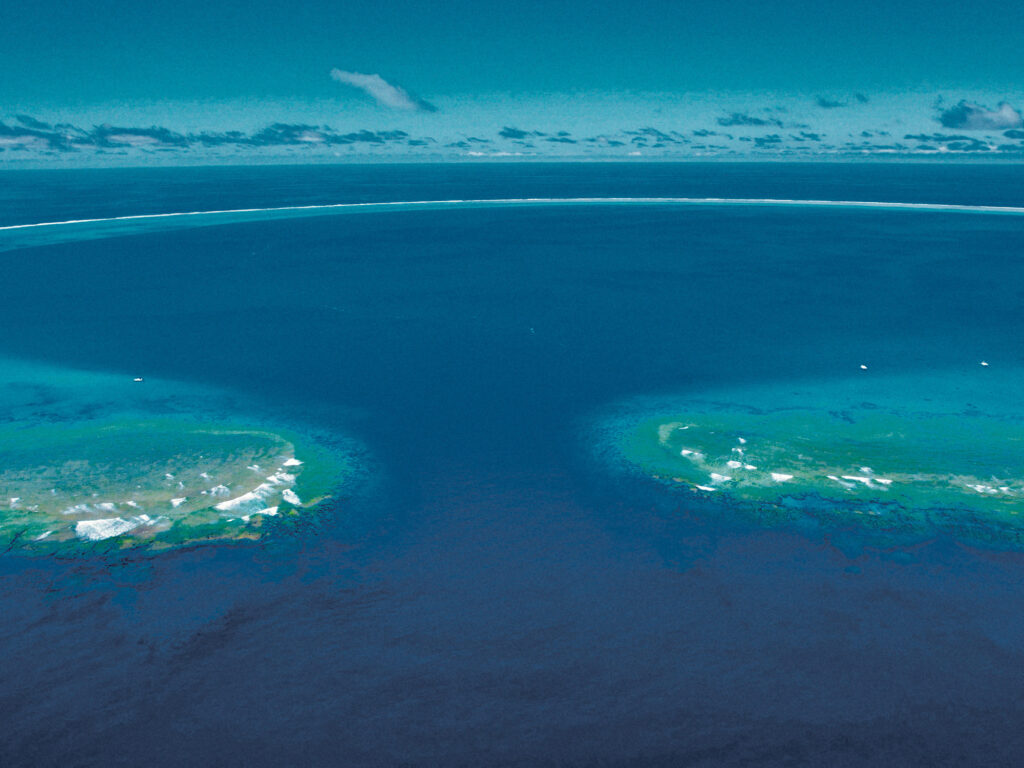 An aerial view of the lagoon and the pass, North Minerva Reef.
Kia Koropp
An aerial view of the lagoon and the pass, North Minerva Reef.
Kia Koropp
The real beauty of the reef is not just in its untouched state, but also in the connection it fosters with those lucky enough to experience its magic.
The post Minerva Reef: An Underwater Oasis in the South Pacific appeared first on Cruising World.
- Home
- About Us
- Write For Us / Submit Content
- Advertising And Affiliates
- Feeds And Syndication
- Contact Us
- Login
- Privacy
All Rights Reserved. Copyright 2025, Central Coast Communications, Inc.